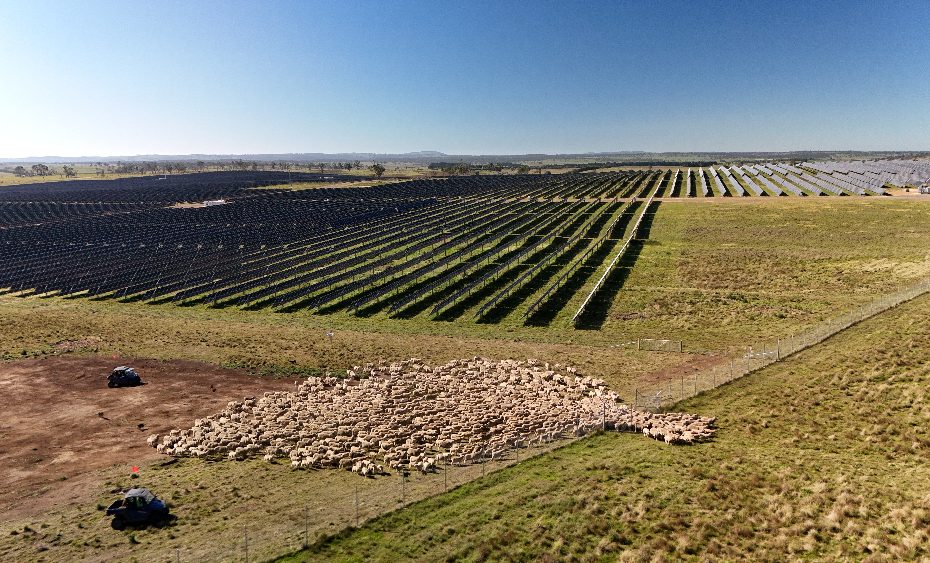The 720MW New England Solar project, developed by ACEN Australia has hit its 400MW peak generating capacity and is now the grazing ground for more than 2,000 merino sheep.
The project site covers 2,000ha of cleared grazing land leased from local landholders and will provide enough clean renewable power for around 300,000 homes.
Construction of the first 400MW stage has been completed, making it one of the largest operating solar PV generators in Australia.
Around one million solar panels have been installed across 1,200ha of the Stage 1 project site.
The practice of sheep and solar farms coexisting is known as solar grazing, with a number of trials both in Australia and overseas showing that solar panels improve the local conditions through shade and moisture and hence leads to better pasture.
New England Solar Workplace Health and Safety Adviser, Robyn Doyle, said that she has been tasked with overseeing the release of sheep across the solar farm site.
Ms Doyle grew up on a large sheep farm in western New South Wales, learning shearing as a teenager. She said that she is happy to be blending her new career on the solar farm, with her old love of sheep farming.
“The sheep are on site for about six weeks at a time and they have made themselves perfectly at home,” Ms Doyle said.
“The panels rotate as they track the sun and this balance between light and shade is great for new grass growth. It’s just heaven for hungry sheep.
“The panels offer shade from the hot sun and rain for the sheep and protection from aerial predators for their young lambs.
“It just seems like a really good match – the sheep stay protected and well fed, and they help reduce vegetation and fire risks on site.”
Drinking water for the sheep is provided by natural dams on part of the site, while in other locations pipes bring water to site from bores on neighbouring farms.
The sheep generally look after themselves, and its suspected ewes have given birth to young lambs under the panels on at least two occasions.
There are plans to introduce more sheep on site from other landholders, taking the solar grazing mob to more than 6,000 sheep in total.
ACEN Australia Managing Director, David Pollington, said that the New England Solar project was now generating clean renewable energy into the National Electricity Market.
“From the first day, the local community, businesses and our First Nations partners have supported and guided us on this project,” Mr Pollington said.
“It started with our development and approvals more than six years ago and continued through to construction and now into operations.
“It’s a great sight to see agriculture co-existing with renewable energy in such a positive way.
“The project will provide enough clean renewable energy to power around 300,000 homes, but it’s also providing a really productive space where sheep can graze, protected from the harsh elements, particularly during hot conditions.
“We’re extremely pleased to celebrate another important milestone for the project, the farming community and the energy transition underway across the country.”
The 720MW New England Solar project is being developed in two stages by ACEN Australia, with the first stage commencing construction in 2021.
More than 400 workers have been on site during the peak of Stage 1 construction
Around one million solar panels have been installed
115,000 support piles have been driven
Hundreds of kilometres of electrical cables have been laid
Around 80 per cent of the construction workforce has come from the New England region, who have upgraded and maintained roads, constructed and connected tracking systems, built supporting infrastructure and installed solar PV modules.
New England Solar Stage 2 includes a 320MW solar development and a 200MW two hour battery storage system.
The battery energy storage system will provide enough on demand energy to power 175,000 homes. Work is expected to begin on the Stage 2 development in 2024.
Featured image: A herd of sheep being released onto the New England project site. Image credit: ACEN Australia.
